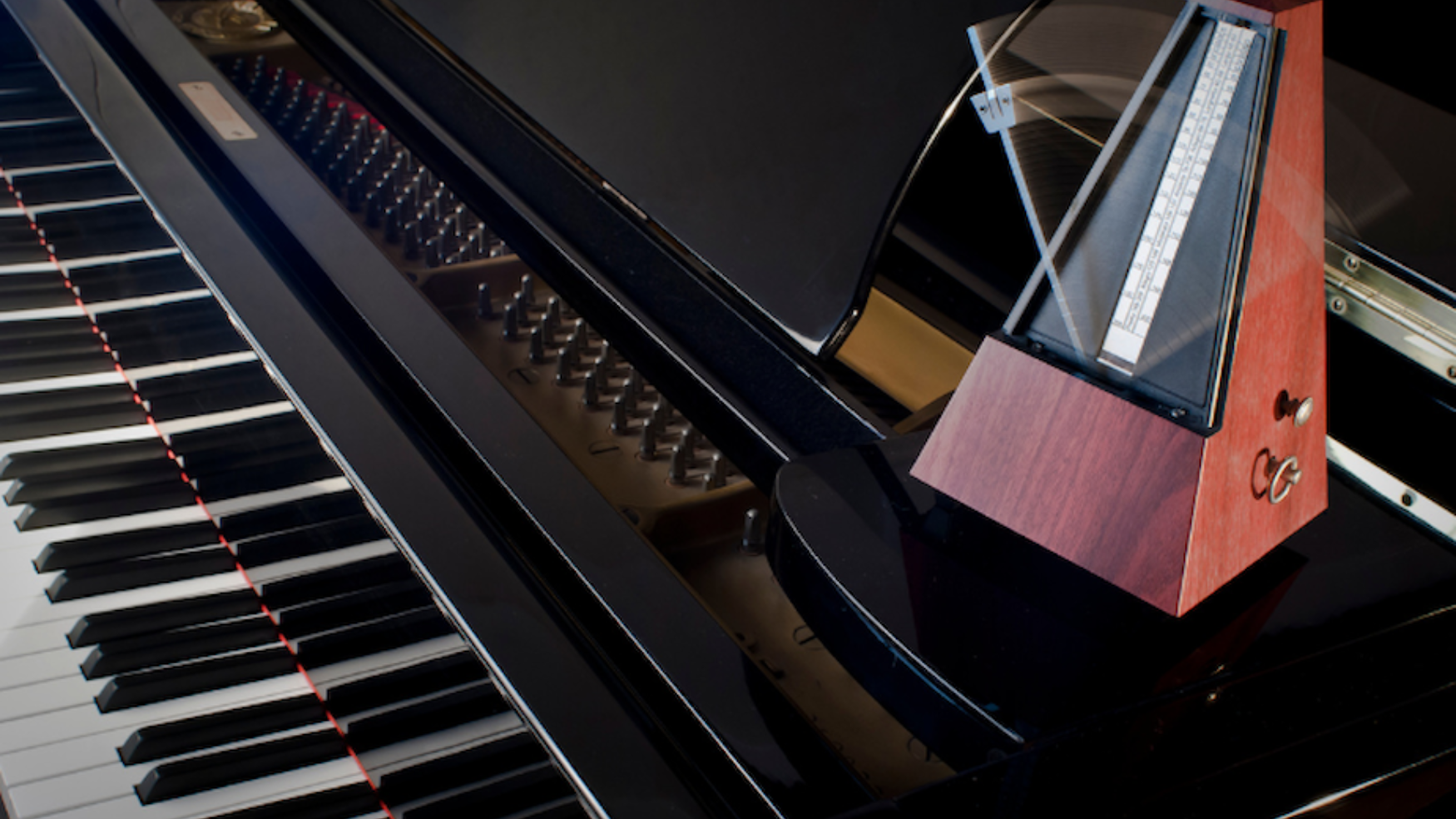Oboe vibrato is a complex topic and unpacking it often if not always leads educators of all ages down a rabbit-hole of opinions, ideas, and sometimes (most times) less-than-helpful and usually confusing or conflicting sentiments. The goal of this article is to not only provide some clarification to the cloud of unknowing that is oboe vibrato, but to give band directors and private oboe instructors alike a set of tools to establish a more comprehensive pedagogical understanding of this incredibly varied musical tool through thorough explanations aimed at educators of all levels and exercises for both beginner and advanced students.
I cannot remember the exact moment in my own oboe journey in which my first teacher ‘taught me vibrato’. That being said, due to the physical demands of creating a sound on the oboe and simultaneously altering the airflow (what vibrato is at its most fundamental level), this journey must have begun once my foundational support/airflow was sufficiently established. Now as a teacher myself, I find that I first broach this topic and begin the process once I feel that the primary impetus to beginning this process is identifying that the particular student’s airflow and support is developed to a point that alterations to the airflow will not negatively impact sound production. I am listening for consistency of airspeed in proportion to the range of the instrument being played in, the ability to negotiate most major pitch tendencies, and both consistent and accurate movement both in and out on the reed as they move up and down the range of the instrument.
Oboe vibrato cannot and should not be viewed as a ‘one-size-fits-all’ technique from the teacher’s perspective. There is not a predetermined amount of time that a student should play the oboe before vibrato is taught. Likewise, there should be no expectation of students using vibrato based on how long they have studied or how old they are. If you have an oboist in your ensemble who you think might be ready to start incorporating vibrato into their playing, consult with their private teacher and be sure to share these exercises!
To begin this vibrato-journey, let us first start with some of the tell-tale signals in a student’s playing that might indicate that they are not ready to learn this technique.
- Insufficient Embouchure Control:
- The student struggles to maintain a stable embouchure and often has excessive jaw/chin movement.
- Remember, the chin should remain mostly flat and down when forming the embouchure, with the reed supported through firm corners of the lips.
- There is inconsistency in tone production due to embouchure instability
- The student might be biting the reed or generally applying too much pressure to the vertical axis of the delicate double reed.
- If the student is biting/compressing the reed top-to-bottom, pitch stability will be mostly non-existent and the tone quality will be generally unbalanced.
- Poor Air Support and Breath Control
- The student does not use proper diaphragmatic support, resulting in an unsteady tone.
- There are frequent interruptions in airflow, making it difficult to sustain a note or maintain the pitch of a sustained note.
- If the student is struggling with air support/breath control, then most likely, their dynamic range is also stunted and is generally immovable (always too loud or always too soft).
- Unstable or Underdeveloped Tone Production
- The student has difficulty producing a clear, focused tone across all registers and does not demonstrate an ability to find the pitch floor of the reed they are using.
- If the student has major struggles with intonation, then these issues will only be exacerbated by adding vibrato.
- If there is a lack of core/resonance in the tone, vibrato will not fix this or ‘cover up’ the weaknesses.
- Unrefined Listening and Control of Vibrato Concept
- The student does not yet recognize or understand what good vibrato should sound like. Make sure that the student is able to identify examples of instrumental playing or singing in which vibrato is used and omitted.
Plainly put, once the student demonstrates consistent support, stable embouchure, and a clear idea of what makes up an objectively good tone, they should be ready to begin learning how to incorporate vibrato into their playing. The more the student listens to great examples of vibrato (not solely relegated to oboe vibrato), the more refined their conceptualization of the technique will become.
Time to play…
I will preface the following with a disclaimer that the opinions and insights that I am about to share and have already shared are all my own and are founded in my own experiences as both a performer and teacher. I have had many wonderful teachers in my life thus far, and I have gleaned meaningful and helpful information about this complex topic from each of them. I am eternally grateful for their continued guidance.
In very general terms, there are two trains of thought when it comes to where vibrato originates: throat or diaphragm. Now, I am by no means in the middle or even late-stage of my career as an oboist, so my opinions are definitely liable to change, but at present, I believe that vibrato originates from a space of flexibility and that there is no hard and fast point of origin that anyone can or should point a finger at (or reed, for that matter). Rather than focus on the ‘where’, I have had great success focusing on the ‘how’. If the student can grasp how vibrato is produced, then practice will help them to discover consistency and their unique specified location(s) for producing it. I maintain that great, sensible, and sensitive vibrato is flexible and mobile. The lower register of the instrument (Low Bb – second line G natural) requires a more broad, diffused approach which is felt lower in the respiratory system. The mid range (second space A flat through fifth line F natural) feels the vibrato move slightly higher, and the higher the tessitura, the vibrato seems to migrate accordingly.
First, I ask my students to play a second octave C natural (two ledger lines above the treble clef) at a comfortable, full forte dynamic. With the metronome set to quarter note = 60 BPM, I ask them to hold the note for eight beats. Then, I ask them to pulse their air every two beats; this can be accomplished by simply ‘pushing’ a little harder for only a brief moment (less than a full beat of the metronome). Even in this very deliberate, slowed-down exercise, it is important to note that the student, if they did it correctly, just used vibrato! Now, all there is to do is speed it up!
As is the case with nearly everything else in music, the success of this is dependent on practice! Below are a series of structured exercises to help oboists of all ages and experience levels get their vibrato going and to eventually refine this skillset. These exercises are very mentally taxing; a little work goes a long way! In the beginning, focusing on one or two exercises for 15 minutes of an hour long session is plenty. Remember, consistency is key.
Phase I: Introduction to the Vibrato Mechanism
Exercise 1: Vocal Syllable Simulation
Objective: To locate and engage the fluctuation of air and to isolate the pulsation feeling used in vibrato.
- Without the instrument, imitate a gentle “ha-ha-ha” or “heh-heh-heh” syllable repeatedly, pushing/pulsing the air above the threshold for consistent exhalation.
- Avoid excessive use of the diaphragm or engagement the abdominal muscles beyond the necessary amount required to blow air out as if you are blowing through the reed.
Exercise 2: Rinse and R(eed)peat!
Objective: To coordinate air and feeling of pulsation with the reed before adding the oboe.
- Imitate a gentle “ha-ha-ha” or “heh-heh-heh” syllable repeatedly, pushing/pulsing the air above the threshold for consistent exhalation so that constant sound is produced.
- Avoid excessive use of the diaphragm or engagement the abdominal muscles beyond the necessary amount required to sustain pitch.
- While sustaining the air column, repeat the “ha” motion to create pulsations in the air stream.
- Listen for subtle undulations in the reed’s sound.
Phase II: Establishing Control and Consistency
Exercise 3: Pulses per Beat
Objective: To develop rhythmic and even vibrato at various speeds.
- Play a sustained pitch (C5 is a great place to start as higher notes need faster air with smaller aperture) with a metronome set to 60 bpm.
- Introduce vibrato at:
- 2 pulses per beat
- 3 pulses per beat
- 4 pulses per beat
- 5 and 6 pulses per beat
- Be sure to have a tuner on the stand to maintain an acceptable core-pitch!
Exercise 4: Pulse Ladder
Objective: To build agility and control in vibrato speed.
- On a sustained note, begin with 2 pulses per beat and incrementally increase to 6, then descend back to 2.
- Maintain a steady metronome tempo, consistent tone, and good pitch.
Phase III: Shaping and Stylizing Vibrato
Exercise 5: Vibrato Entry and Exit
Objective: To control the onset and release of vibrato.
- Sustain a pitch without vibrato, then gradually introduce vibrato over several beats.
- Reverse the process by beginning with vibrato and gradually tapering it out.
- Strive for seamless transitions without changes in pitch or tone quality.
Exercise 6: Shaping the Vibrato
Objective: To explore expressive flexibility in vibrato.
- Experiment with varying:
- Speed (slow to fast and vice versa)
- Amplitude (narrow to wide)
- Create deliberate vibrato “shapes” such as a crescendo vibrato or a vibrato that mirrors the contour of a musical phrase.
Phase IV: Application in Musical Context
Exercise 7: Vibrato in Scales
Objective: To integrate vibrato across different registers.
- Perform long tones on each degree of a slow scale.
- Apply vibrato with varying speeds and widths, alternating on each note.
- Focus on maintaining tonal and vibrato consistency through register shifts.
Exercise 8: Etude-Based Vibrato Planning
Objective: To develop musical judgment in vibrato use.
- Select a slow melodic etude (e.g., from Barret, Ferling, or Gillet)
- Assign vibrato styles based on musical context:
- Sustained notes: broad, slow vibrato
- Cadential figures: delayed or intensified vibrato
- Rapid passages: minimized or omitted vibrato
- Mark vibrato entries and shapes into the score as a form of expressive planning.






